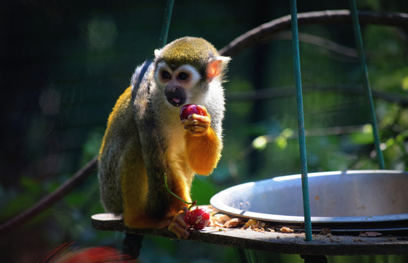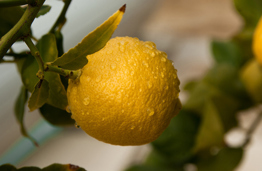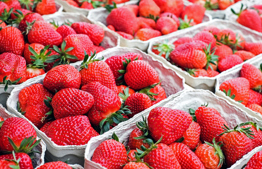What do we do today with terumot and ma'aserot in Israel: a brief overview

How do we take terumot and ma'aserot today and actually give them to their intended destinations in a feasible and halachically optimal manner? Feeding teruma to zoo animals, lighting Shabbat candles with teruma oil, contracts with a levi, and more.
There are five types of gifts given from produce grown in Israel today:
(1) Teruma gedola; (2) terumat ma'aser (both all years of the shemita cycle)
(3) Ma'aser rishon (all years); and (4) Ma'aser ani (years three and six of the shemita cycle)
(5) Ma'aser sheni (years one, two, four, five of the shemita cycle)
Terumot are sacred, and it is forbidden for ritually impure kohanim to eat; today we are all considered impure due to contact with the dead. However, it is permitted for a kohen to feed it to his livestock. Today, zoo animals are sold to a kohen (similarly to selling chametz), and terumot are fed to the zoo animals. This is the practice at the Biblical Zoo in Jerusalem, the safari in Ramat Gan, the Biblical Museum in Beit Shemesh, and at many other places. This is also done in many cow sheds, which receive terumot as animal fodder.
For olives, impure teruma olive oil may be given to kohanim, who can use it to light Shabbat and Channuka candles.
Otherwise, terumot are double bagged and disposed in the garbage. Alternatively, they can be buried in the ground (but not in a compost pile).
Teruma needs to be worthy of human consumption; today, however, it is permitted that it be of a lesser quality (since the kohanim won't eat it). Generally, Grade B merchandise is used for this purpose, which is not marketable due to the color/size/appearance, etc., even if it is edible. The amount allocated for terumot is a little more than 1% of the total produce.
Ma'aser rishon and ma'aser ani belong to the owners (levi'im or poor people). This produce is not sacred, and the owners can technically do with them as they please.
Most kashrut certification organizations work with a loan contract of makirei leviya or makirei ani'im (friends of levi'im/poor people), similar to the makirei kehuna contracts used for the priestly gifts of foreleg, jowl, and maw employed in slaughterhouses. The contract for ma'aser rishon/ani works as follows in these organizations: each time the owner sets aside ma'aserot by designating their location ("on the top"/"bottom"), it then belongs to the levi or poor person. The levi/poor person agrees to return the fruit to the owner, so the owner can use it. At the end of the year, the owner gives a sum of money to the levi/poor person for this service. It is possible that the levi and poor person are one and the same.
At Torah VeHa'aretz Institute, we give money to a levi/poor person in a lechatchila fashion, as follows: we calculate the real value of the produce that would be transferred to the levi/poor person; while the gross worth would be 10% of the produce, he would need to come and take it, transport it, and then sell it; this process would involve various expenses. Our calculation is that the net would be 1%; that is, 1% of the value of the produce goes to a levi as ma'aser rishon and another 1% to a poor person (during the relevant years) as ma'aser ani. Optimally, the actual produce should be given to the appropriate people, and not its value. How do we reach a lechatchila situation of giving fruit realistically, in an accessible manner, for everyone involved? To this end, we employ the makirei leviya solution in a slightly different fashion than that described above:
The owner loans the levi a large sum of money at the beginning of the year. Each time the owner sets aside ma'aserot, the produce becomes the property of the levi, who in turn sells it back to the owner, against the remainder of the loan. At the end of the year, if the levi still owes the owner money, the owner waives the balance. The wonderful levi we work with donates the money he receives to various charitable and Torah institutes.
What we do for ma'aser ani is similar, but the loan is made to a charity fund (such as Mekimi and Paamonim, among others). The money goes to these funds and they distribute it to those in need.
Ma'aser sheni - The sanctity of ma'aser sheni produce today is transferred to coin worth a peruta.
We generally use a 10 sheqel coin, which will make it possible to do more than 100 transfers (also called pidyon, "redemption"). A peruta is approximately 6 agorot, and the addition of a chomesh brings the necessary amount up to 8 agorot. When the coin is "full," its sanctity can be transferred to a 10 agorot coin or to a peruta included in a new 10 sheqel coin, and then the new coin is used. Before Pesach of years four and seven of the shemita cycle, these coins are destroyed. Alternatively, their sanctity can be transferred to three spoons of sugar, which are dissolved and poured down the drain.
Each time we set aside ma'aser sheni or neta revay produce, we transfer their sanctity onto a coin. If the produce was definitely untithed (vaday tevel), we first say blessings on the separation and the redemption of the fruit.
There are various institutes, Torah VeHa'aretz included, that offer their members the service of using a coin for the transfer of ma'aser sheni (and neta revay) sanctity. This coin is especially designated for members and is handled on their behalf at the institute. This service helps make the process of separating terumot and ma'aserot easier and more convenient. To read more about this service (Beit HaOtzar), see here.
For a longer article about: "Separating Terumot and Ma'aserot in Public Markets", see here.




